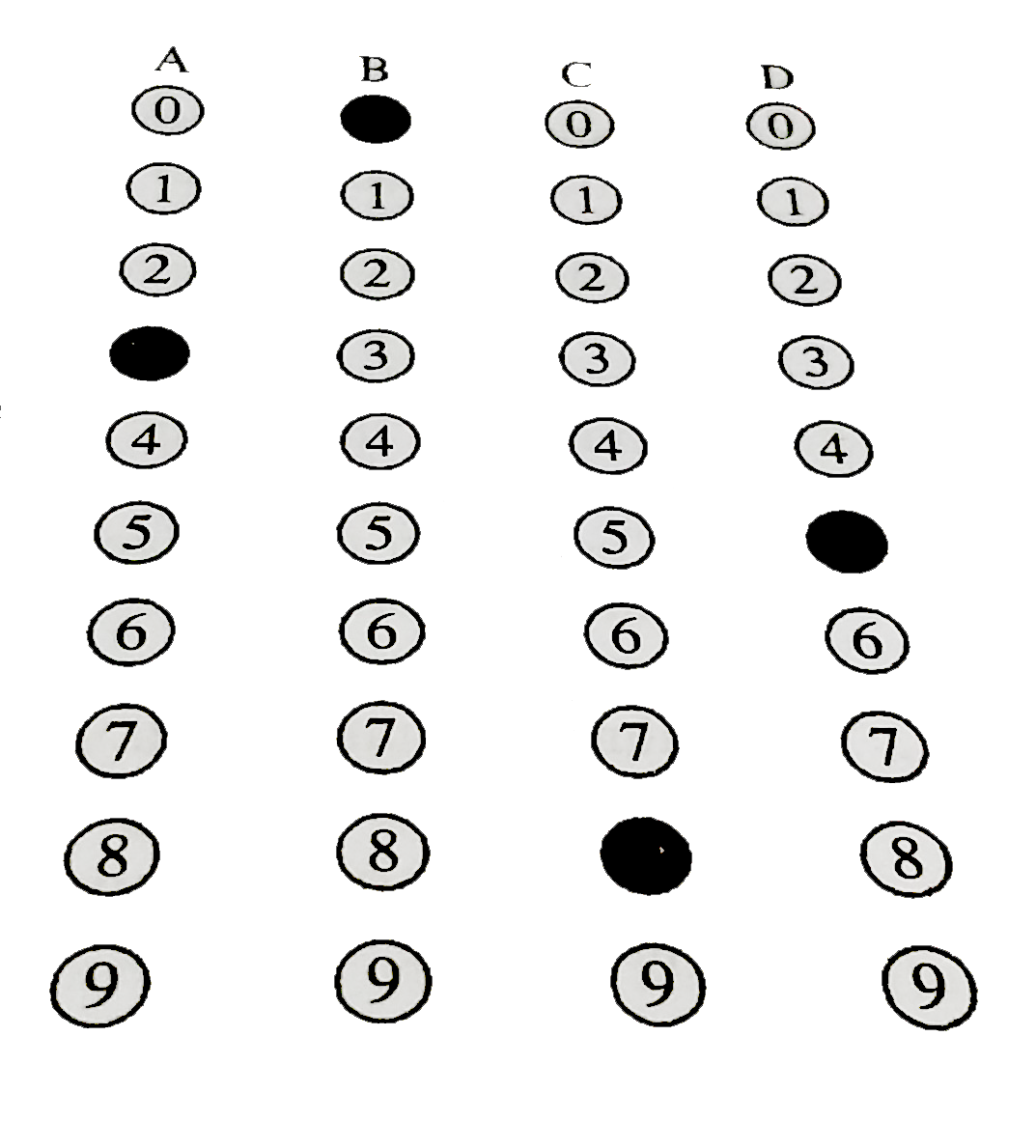Amongest the following, how many ores are roasted to convert them into their corresponding metal oxides, alumina, zinc blende, iron pyrites, copper pyrites, galena.
The correct Answer is:5
Zinc blende, iron pyrites, copper pyrites, galena, chalocite
Similar Questions
The answer to each of the following questions is a single digit integer from 0 to 9. If the correct answer to the question number A,B, C and D say 3,0,8,5 respectively, then the correct darkening of bubbles should be as follow.

Amonst the following, the ores which are roasted to convert them into their corresponding metal oxides are: Alumina, zinc, blende, iron pyrites, copper pyrites, galena, chalcorite
View SolutionAmongst the followings the ores which are roasted to convert them into their corresponding metal oxides are :
alumina, zinc blende, iron pyrites, copper pyrites, calamine, galena, chalcocite.
View Solution
Knowledge Check
Which of the following pair of ores can not be converted into corresponding metals by pyrometallurgy ?
AAg2S,ZnSBCu2S,HgSCMnO2,SnO2DNoneWhich of the following pair of ores can not be converted into corresponding metals by pyrometallurgy ?
AAg2S,ZnSBCu2S,HgSCMnO2,SnO2DNone of theseWhich of the following process is involved in the extraction of corresponding metal when Zinc Blende is used as ore?
ACalcinationBRoastingCfroth floatation methodDCarbon reduction
Amongst the following the metals which are roasted to convert them into their correspondign metal oxides are : Zinc blende, iron pyrits, alumina , calamine, copper pyrites, galena , pyrolusite, malachite.
View SolutionZinc blende : ZnS :: Copper pyrite : ______
View SolutionAmongst the following , the total number of ores which may be concentrated by froth floatation process is : haematite, bauxite, galena, copper pyrites, sphalerite, cassiterite, calamine, argentite , chalocite.
View SolutionAmongest the following , how many ores can be concentrated by froth flotation process :
Galena, sphalerit, cassiterite, calamine, chalcocite, haematite, argentite.
View Solution(a) During roasting most of the metals are converted into their respective oxides which are then reduced to the corresponding metals by using suitable reducing agents. However, it has been seen that in some cases, instead of the metal oxide, it is the metal which is isolated.
Read the above passage and answer the following questions :
(i) Name two metal sulphides which are converted into the corresponding metals during roasting. When does it happen so ?
(ii) Name two metal sulphides which get converted into the corresponding metals during roasting. When does it happen so ?
(b) What is a flux ? What is the role of a flux in teh metallurgy of iron and copper ?
(c ) How is wrought iron different from steel ?
View Solution
